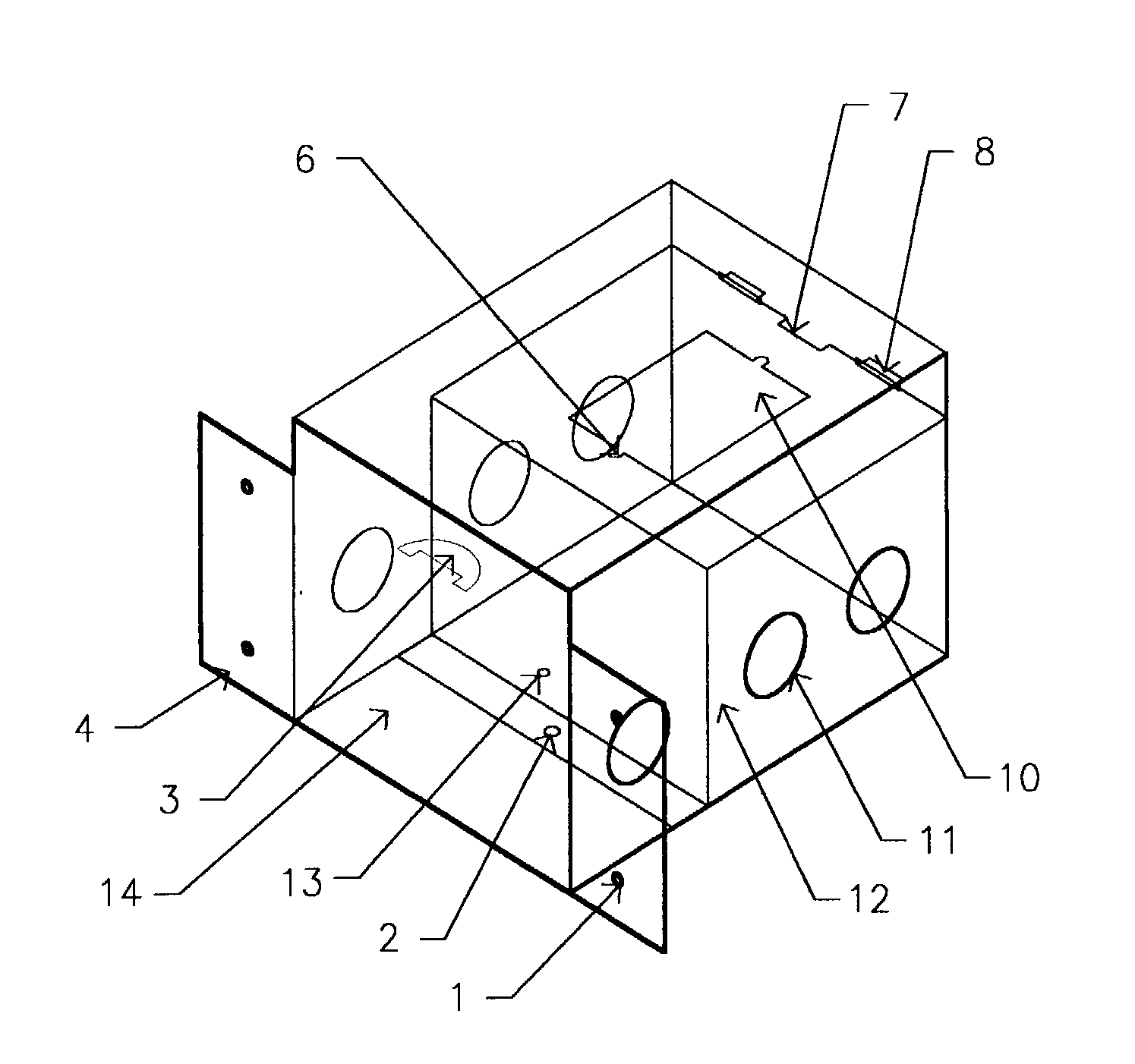Quick installing, electric chime and back box
a technology of electric chime and back box, which is applied in the direction of electrical apparatus casing/cabinet/drawer, coupling device connection, transformer/react mounting/support/suspension, etc., can solve the problems of only screwing the chime to the sheetrock, the location of the splice box is not very substantial, and the system is very fragmented
- Summary
- Abstract
- Description
- Claims
- Application Information
AI Technical Summary
Problems solved by technology
Method used
Image
Examples
Embodiment Construction
[0059] A preferred embodiment of the box of the present invention is illustrated in FIGS. 1 thru 7. The box is constructed of 16 gage galvanized sheet metal. The front of the box as shown in FIG. 2, is large enough to secure the box in a horizontal or a vertical direction by use of screws or nails through the holes in flange, FIG. 4. If box is to be mounted in masonry units, then the flange FIG. 4 would be broken off top and bottom at FIG. 5, thus creating a nice square box that could be easily mounted flush in the masonry location. In the mounted position, the box is ready to receive its electrical wiring through knockouts displayed in FIG. 5 and FIG. 6. These knockouts are sized for use with 1 / 2" conduit or NM type cable requiring 1 / 2" connectors. In masonry units the flange in FIG. 4 would be broken off at FIG. 5. The 24 v wire for all uses will enter either right or left through knockouts 11 of the low voltage compartment which area is closest to FIG. 2. The 120 v conduit will b...
PUM
| Property | Measurement | Unit |
|---|---|---|
| voltage | aaaaa | aaaaa |
| voltage | aaaaa | aaaaa |
| size | aaaaa | aaaaa |
Abstract
Description
Claims
Application Information
 Login to View More
Login to View More - R&D
- Intellectual Property
- Life Sciences
- Materials
- Tech Scout
- Unparalleled Data Quality
- Higher Quality Content
- 60% Fewer Hallucinations
Browse by: Latest US Patents, China's latest patents, Technical Efficacy Thesaurus, Application Domain, Technology Topic, Popular Technical Reports.
© 2025 PatSnap. All rights reserved.Legal|Privacy policy|Modern Slavery Act Transparency Statement|Sitemap|About US| Contact US: help@patsnap.com



